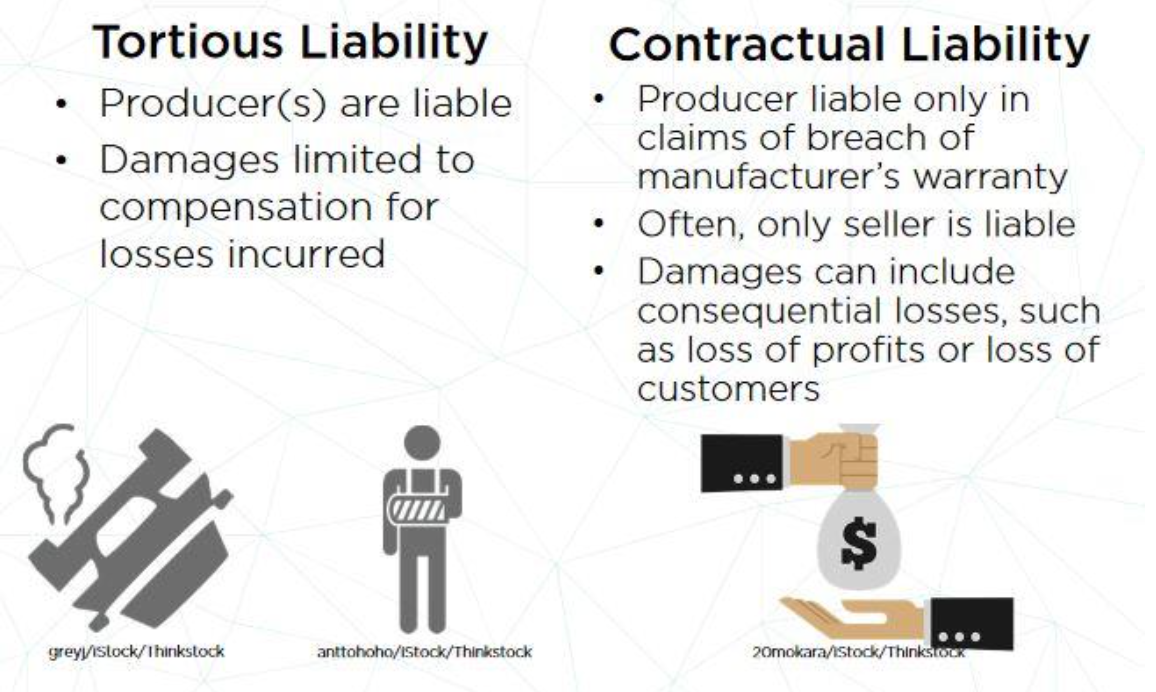Tortious vs. Contractual Liability
Typically, in all liability lawsuit, the injured party will sue under multiple theories of liabilities to maximize their chances of success. Therefore, any lawsuits is likely to include both tortious liability clains (like negligence) and contractual liability (like breach of warranty).
Differences: Possible liable parties are different:
- In tortious liability, the user can sue all parties involved in the production of the software product, although the user needs to show that each party was negligent in some way.
- In contractual liability, there needs to be a contractual relationship between the injured party and the party being sued. If the liability claim is a breach of the manufacturer’s express warranty, then the warranty serves as the contract and the buyer can sue the software producer directly. Typically, though, the only contract involving the user is the contract of sale between the buyer and seller of the product. In that case, the buyer can sue only the retailer of the software. The retailer can then sue whomever they purchased the software from, and so on, up the chain of distribution, eventually leading back to the original software producer. Damages are claimable or not:
- In tortious liability, compensation for the user is usually only for losses incurred. The intent of this compensation is returning the user to the state they were in before the software product harmed them.
- In contractual liability, the intent is not to return the user to the state they were in before using the software. Rather, the intent is to put the user in the financial state that is close to where they would have been had the contract or warranty been upheld. In other words, in addition to compensation for direct losses, the injured party can also claim compensation for indirect or consequential losses, such as loss of profits or loss of customers.

In the United States, liability lawsuits are also likely to request compensation for pain and suffering and include punitive damages, both of which can be quite substantial.